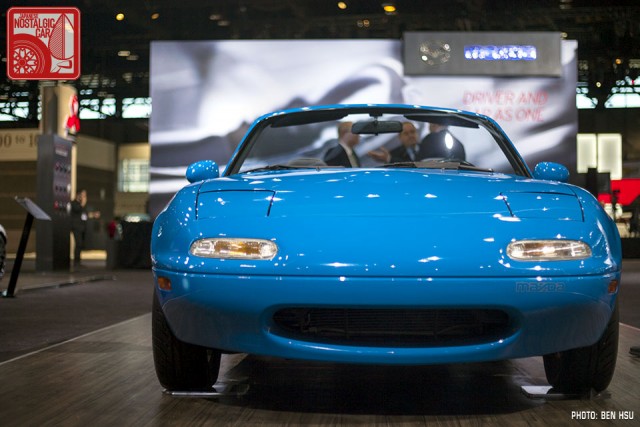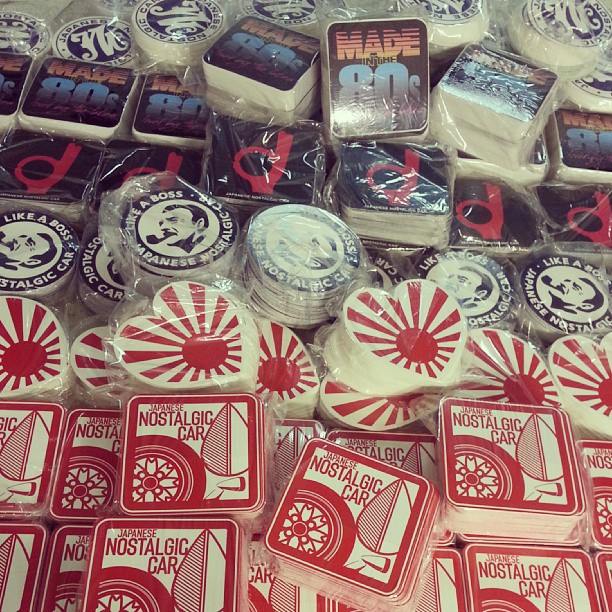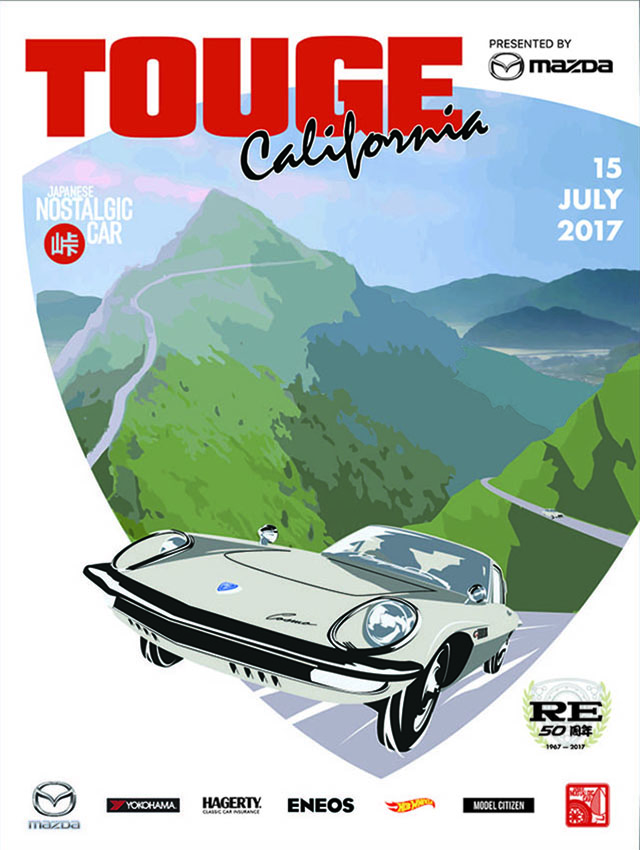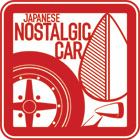In case you hadn’t heard, San Francisco’s Academy of Art University is selling off most of its collection of 150 classic cars. As one of the nation’s top industrial design schools — and headed by none other than Tom Matano — it keeps a car museum to serve as inspiration for students. However, the school feels that today’s generation has lost interest in Pierce-Arrows or Duesenbergs. So the museum is selling most of its pre-war automobiles to acquire more modern Japanese and muscle cars, particularly of the 60s-80s era, which it believes are more relevant to students who will go on to design the next generation of vehicles.
Which JNC is a must-have for a car museum?
The most entertaining comment by next week will receive a prize. Scroll down to see the winner of last week’s QotW, “How can we save my friend from buying a 12-year-old EV?“.
Many of you said that my friend should just buy the EV. crank_case made the excellent point that such commuters are going to likely be the only way first-generation EVs will be preserved, unless there’s an EV museum established someday. Others, like Ian G. and Franxou, said get an EV, just not a 12-year-old one.
Taylor C., explained why older EVs aren’t worth it, and suggested the holy sedan trinity of Camry/Accord/Altima instead, but one with a manual transmission. Similarly, StreetSpirit nominated any 90s stick shift Civic, Corolla, or Mazda, while ra21benj picked any non-turbo Toyota or Honda, and Genda Nicolai Yturzaeta Iwakawa proposed a Stellantis product, but unfortunately most of the cooler European-market Stellantis cars aren’t available in the US.
What is avalable in the US is Clay‘s pick of the Geo Metro, the classic mpg champ. My friend liked that option, but also dug speedie‘s Honda Fit for its versatility. Honorable mention goes to dankan, another EV proponent, but who gave a brilliant, oft-overlooked gasoline alternative, the Toyota Paseo.
I asked my friend to pick the champion, and the winner this week is David and his Honda CR-Z. They’re relatively affordable, hybrid, available in a manual, and have a loose connection with a Honda classic.
What are the Honda CR-Z going for these days? Seems like he’s the exact case for this type of vehicle, A small commuter that’s comfy, where they turned economy into a game and tried to keep it fun.
Omedetou, your comment has earned you a set of decals from the JNC Shop!









Short list…
240Z
NA Miata
Toyota MR2
Acura NSX
Mazda Cosmo Sport (L10A / L10B)
Mazda Cosmo (1990s) (JC)
Nissan Fairlady Z (Original) (S30)
Nissan Fairlady Z (Z32) (Z32)
Mazda RX-7 (FD) (FD3S)
Nissan Silvia (S15) (S15)
Honda NSX (First Gen) (NA1 / NA2)
Toyota MR2 (First Gen) (AW11)
Subaru Alcyone SVX (CXD)
Lexus LFA (LFA10)
Nissan’s four boutique cars have this distinction already … The Figaro, BE-1, Pao and of course, the S-Cargo, are already ensconced in a museum. The Lane Motor Museum in Nashville, has all four of them in it’s collection of unusual and, mini cars. Cars like Messerschmitts, Heinkels, Subaru 360s and other less well known marques. Although we haven’t been there yet, it is on the bucket list to visit … but, only in our S-Cargo. Using the Mercedes-Benz kind of defeats it, yes? Hopefully, the van will be repaired this year and, we will take a trip to the museum. I can hardly wait to see the expressions of people when we arrive!
Hey, thanks for the mention! Looking forward to seeing you and your S-Cargo here one day. (Benzes are always accepted though.)
We’re fortunate to have a large collection of JDM gems. So many, other museums have borrowed from our stash. The Honda City Turbo/Motocompo, Honda S600 Coupe, and Toyota Sports 800 have been on loan to the Petersen in the past, and the Honda S660 is currently at the Savoy.
On display as of this writing are the Mazda Carol, Honda Insight, Nissan Be-1, Honda S600 Coupe, Toyota Sports 800 (my all-time favorite), and Honda Beat.
In no particular order…
Acura NSX
Honda Accord (70’s – 90’s)
Honda Accord Type-R
Honda CR-X
Datsun Z (70’s – 90’s)
Honda Crosstour
Mazda Cosmo
Toyota Previa
Mazda 626
Mazda RX7 (1st & 2nd Gen)
Mazda MX-5
Mitsubishi Starion
Honda Civic SiR
Honda Civic Type-R
Acura Legend (1st & 2nd Gen)
Acura Integra (80’s & 90’s)
Acura Vigor
Acura ZDX (1st Gen)
Infiniti G20
Infiniti G35
Nissan Sentra SE-R (B13)
Nissan 200SX (80’s & 90’s)
Toyota Celica (70’s – 90’s)
Toyota Supra (80’s & 90’s)
Lexus LS (80’s & 90’s)
Nissan NX
Nissan Pulsar NX 2nd Gen (1986 to 1990)
If we say money isn’t a barrier, then my answer is the Toyota 2000GT.
I’d imagine we all know why, but perhaps the general museum visitor may not, and I’m not sure its impact can be overstated.
If we say money is a barrier, and let’s be honest, money is generally an issue, then it probably has to be the 240Z – for very similar reasons, and of course a more attainable level.
Car design is a function of engineering, purpose, and contemporary tastes. As an art school the collection needs to reflects these themes. So here are my picks for each generation:
60s – Toyota FJ40 (spans all 3 decades), Toyota 2000 GT, Mazda Cosmo L10, Honda N600, Nissan Skyline GT-R (C10)
70s – Datsun 510, Nissan 240Z, Toyota Celica, Honda Civic
80s – Mazda RX-7 (SA/FB/FC), Honda Civic & CR-X (4th Gen), Toyota Celica/Supra (A60),Toyota Forerunner (N60), Mazda Miata (MX-5), Lexus LS400, Nissan Pathfinder (YD21).
I think I’d work backwards from the premise. Since they are trying to find design inspiration for the students who are going to be creating the next generations of consumer products, they need things which show what design can do, even on commercial budgets. It’s not just the art, but the commercial appeal that’s the point. So, what lessons do JNCs have to offer? Well, it’s not just “fun” in the traditional sense. Good design can be delightful even if it’s not about pure speed. So, while a Miata and 240Z are definitely mandatory, I think we’d also need a mid-80s Honda Civic Shuttle, a Subaru 360, 1990 Lexus LS400, and a Nissan Pao. All of them had interesting design aspects, but also were designed on a budget and intended to be sold to hundreds of thousands of people. And that’s the lesson. How to do meaningful design work at mass-production scale.
A question like this actually made me compare to famous entertainment superstars and who they were 30 years ago, vs who they are today. For instance, you have a business powerhouse like Dr. Dre and his Beats By Dr. Dre brand. A lot of kids today are surprised to realized that Dr Dre actually pumped out one of the best rap albums of all time (The Chronic). Then you have Snoop Dogg, who’s become a well-liked celebrity figure with lots of charitable acts; many probably ddin’t know he pushed the limits of vulgarity in his album “Doggy Style.”
I think where I’m getting at is finding a JNC that’s morphed into something distant from what the roots were like. Not necessarily a bad thing, but it’s always good to see the origins. In this case, the original Datsun 240Z, the early Nissan Hardbody King Cab, a 1985 Honda Accord, and the original Lexus LS400 are pretty good examples. The four have evolved to cater to today’s mainstream tastes, some being the benchmark while others but I think it’s good history to see how the vehicles were conceived to serve a finite audience selection.
I know my selection is not the unobtanium hen’s teeth car that people post pictures of on their walls, but I think the importance of these mentioned vehicles really helped define the Japanese automotive realm to where it’s currently at. I think it behooves the museum to find an example of the mentioned vehicles so that their importance can be recognized; imagine a world where we never had the Z, or Accord, or LS400, or Hardbody!
Easy, there’s 3:
Subaru 360, the first of the Kei cars and effectively Japan’s answer to the Volkswagen Beetle and Citroen 2CV. This little car is very historically significant, as it came just a few years before Japanese cars would start gaining traction outside of the Japanese market.
Sorry, hit enter before finishing:
Second would be the Datsun 12 from 1933, as it is the first Datsun/Nissan model
Third would have to be a very early model Mitsubishi Jeep used by the JSDF or U.S. Army during the Korean war.
If it were a normal museum, I would have made a solid choice: an RX-7 or a 2000GT.
But if it were a museum for future designers, I would choose these cars:
1: Subaru 360
2: Nissan Be-1
3: Subaru Sambar Dias Classic
4: Any Kei Truck
The Subaru 360 is the result of ingenuity in design, aiming for maximum efficiency with limited resources. It is like the Beetle, Mini, and 2CV in the East, and is perfect for teaching functionality and efficiency.
The Be-1 and Sambar Dias Classic are the polar opposite of the Subaru 360 in that sense. These cars are designed not for efficiency, but just to entertain people. But they represent a trend in Japan, and should be valuable as historical documents of automotive design.
The Kei Truck is similar to the Subaru 360. It was designed for maximum efficiency as a workhorse in a limited size, and is one of the most efficient truck shapes that Japanese society and history have matured over more than half a century. It may not be beautiful or cool, but it’s sure to be a great example for studying industrial design.
I think it would be important to capture the essence of what Japan began to offer in the 70’s. And of course the dynamic styling of the 80’s.
As such, most of my knowledge lies within Toyota and its history, so I will do my best to present other manufacturers as well.
1. The Nissan / Datsun 240z. This truly was Americas first Japanese sports car. So it really is only fitting, and they were incredibly progressive and popular for the time period.
2. Toyota Celica – RA or TA. I would almost lean towards a TA Chassis, because the The T Engines were not as popular, nor as heavily produced, as the R series was. Granted the 18r and 20r were great, damn near indestructible, it would be nice to see something not as popular.
3. Toyota Sports 800 – This is kind of a given, and lets be real, the 2000GT will most likely be out of the budget of the museum. The S800 is more than a viable car for showing what the future looked like, and a real peek in to what Toyota was looking to achieve with driving characteristics and styling.
4. Honda S600 – Marking Honda’s first mass production, even though it wasn’t offered stateside, its a the introduction of Honda coming to take on a global market. It looks good, and even better in the fastback.
5. Nissan R32 GTR – This one is a given. Turbo. AWD. Straight Six.
6. Toyota MR2 (Aw11) – The pinnacle of the 80’s wedge. More-so than any other available wedge car, as Toyota had now been in the global market for longer than a decade.
7. Toyota Hilux – The most reliable pickup truck any manufacturer has ever produced. This is where you can offer your homage to the R series engine, specifically the 22re. The go any where, do anything truck.
8. Honda CRX – This really was the first “hot-hatch” and you hear it more often than not that people “wish they never got rid of their CRX.”
9. Honda/Acura NSX – This is also a given, however it is thee car produced that let the world know that Honda was more than just Motorcycles and small commuter cars.
I could go on with this list, however, i feel its stacked with the highest rated, popular, and innovative machines of the 70’s and 80’s from the main 3.
Thanks Japan.
I forgot about the Hakosuka. Thats self explanatory.
A lot has been mentioned already, but four I’d include:
1st gen Nissan Prairie / Stanza Wagon – Showing the Japanese got there first with the first true modern minivan. You can argue it was inspired by the Lancia Megagamma concept, but Lancia said no, while Nissan knew a good idea whan it saw it.
Daihatsu Campagno – I believe, possibly the first Japanese model sold in Europe, via the UK market. There may have been something earlier, but this is the earliest I’m aware of.
Honda Life Step Van – set the design template for most modern Kei passenger cars we see now. A tall, FWD box with five doors and a flat floor.
1960s Suzuki Fronte SS – Simply because if driving from Milan to Naples in a 360cc Kei car isn’t a masochistic enough feat in itself, Stirling Moss and Mitsuo Itoh managed to do that trip in in one at an average speed of 76.08 mph
Honorable Mention:
Isuzu 117
Mazda 767B
1979 Honda Prelude
Honda S600
Toughest Omission: Subaru Brat
For the cost of a Mercedes 300 SL:
The show:
2004 Subaru WRX Rally Car $300K
2000 Isuzu Vehicross Two cases of beer.
1997 Acura NSX $125K
1975 Mazda Cosmo $50K
1969 Datsun 240Z $125K
1967 Toyota S800 $75K
The constant theme is that every one of these cars is a blast to drive. They can emphasize pure performance, economy, or utility, but they are unique, and not one of them sacrifices form for substance, or substance for form.
All of these cars would connect with visitors and students alike.
Cheers
Being a museum, only having one vehicle to represent the whole Japanese Nostalgic Car cannot be enough, we need at least a small salon showing some eras. One only need to collect one car to be a collector, but a museum of one car would not get us very far.
Since this is a museum aimed at aspiring car designers, I feel we should not only show a car alone in a vacuum, we should show a bite of what was available then, allowing future car designers to study and understand what made these winners, or what made them interesting. I think we are dreaming this for a north-american museum, so even though most cars should be NA-centric, some cars from overseas could be important enough to get in.
First, the start of the japanese car in north-america. I do not think the very first cars are relevant here since they were at most niche-success, so I would suggest the Datsun 240Z, the car that changed the thinking from “cheap little imports” to “this car is as cool-fast-reliable as our US-built cars, they sure can build them right!”, then Datsun went from being a random import car brand to being an actively sought-after car.
After this transformation comes common-place-ification, sorry-not-sorry for my bad english. I do not know much about ’70s and early ’80s cars since I was not very born back then. Once again, this is about design at large, not only looks nor sales, but really about cars as a whole. I would put an early Civic Wagovan on display though, in our era of one platform spawning multiple cars and of SUV everything, the way Honda modified the Civic base to extract the most space out of this tiny shell is a masterclass for future designers.
The square headlight-ification. In this space I would want to see a quintet of ’79s, the Supra, the 280ZX, the Trans Am, the Mustang and a BMW 6-series. The Supra and the Mustang were brand new designs, the ZX was one year old, the BMW was 4 years old and the Pontiac was a ten years old design, but it looked kinda fresh with the modern square headlights that became available in 1975. There is a lot to learn about these cars in terms of pure looks, the styling touches from different continents, but also about the difference made by the square headlights. The Trans Am, being an outdated, large, rounded body shell, was somewhat saved by the cool new headlights that Pontiac was quick to put on everything. That change in legislation gave designers more freedom, but those that kept roung headlights looked outdated. Go look at Pontiacs that only got mid-cycle updates from round headlights to square headlights before 1980 and you will understand, the bodyshells stayed the same, but they looked like ’80s cars during the ’70s compared to their competition that kept the round headlights. Then go look at your favorite mid- to late-70’s cars to compare. Then transition this comparison to modern daytime running lights and headlight designs.
The overtaking the domestic brands era. We would need to put a an ’89 Honda Accord next to the same year of Chevy Celebrity and Ford Taurus, and then an early ’90s Accord since it changed generation and was also the sales leader. Why did the ’89, on this generation’s last year, usually the year when buyers are holding back to buy the next gen, beat the domestic offering on the marketplace? Then one year later the new gen appears, and it is another homerun! In what ways was it evolved, changed, or did it stay the same?
The rise of the japanese luxury car. Not much here, but the Lexus LS 400 is a must for a museum. Also an early Acura Legend, and the corresponding Sterling 825. No need to break the bank and put a Merc S-class and a BMW 7-series for comparison, but an early LS 400 and a second one cut lenghtwise as a showpiece would be awesome. I feel this LS is a bespoke luxury car, while the other japanese luxury manufacturers were simply offering a luxury trim of their finer cars. Infiniti’s and Acura’s lineup were upmarket JDM Nissans and Hondas nicely finished. The Acura Legend is a cool joint effort Honda and Rover though so I think there is something to learn about the design differences between these two.
The Korean offensive. Hyundai, and then Kia, got up and running kinda the same way as everyone else, being helped by foreign manufacturers, then autonomously copying other designs, and finaly coming up with their own designs for cheaper. In what ways a base but loaded Sonata compared to a barebones Camry? But these are boring so I want to have access to a 1996 Tiburon against some coupés from the same era, some that are not a simple 2-doors coupé version of a sedan… Let’s have the Celica and a Mitsubishi Eclipse.
The start of the SUVification. I want to see an early 2-doors RAV4, a second gen 4 doors RAV4, any CR-V and a Grand Vitara, since these started the compact crossover era for Japanese manufacturers. Not my cup of tea, but useful history for future designers. The 4runner and Pathfinder were here first, but these truck-ish offroaders were not as special compared to the domestic offering as the modern compact SUVs were when the arrived.
I would want to add two bonus cars, first is the original 1967 Mazda Cosmo for being this weird oddball with a funky engine, but this time mostly because its design is so ’50s even though it is a late-’60s car. It looks like a variation on the ’53 Corvette theme, kinda space-age but without fins, and with some dashes of ’60s design. Think about it, it came out in ’67, which is also the last year of the second-gen Corvette, right before the sharp lined, thin chrome bumpered third-gen Corvette in 1968. Can you imagine putting a ’68 vette next to the ’67 Cosmo and asking people what year they think these were from? Go look at a ’67 Nissan Skyline or Bluebird, a ’67 Toyota Corona or Mazda’s own ’67 Luce, the Cosmo was an anachronism back then.
Next would be the Nissan Murano CrossCabriolet on display, with the label reading “Don’t.”
“Next would be the Nissan Murano CrossCabriolet on display, with the label reading “Don’t.” ”
Not to dismiss the well written essay, but if your comment was trimmed to this and no other context, it’d be a perfect winner.
Thank you!
I wish we could post a “real comment” in addition to the funnies, because while I really wanted to diss the CrossCabriolet, there is so much that I think should be in a design-related museum, so much forgotten stuff… But yeah, it looks like I tried writing a book!
Hi Chris from LMM!
How nice of you to respond to my post here! Your museum is a terrific place and, it IS on our bucket list. Living in Huntington, WV (where I am the Secretary of the Huntington Regional AACA), we aren’t too far from you so, this is a doable trip (even in our Sunb Yellow over black leather, fully apportioned ’23 Mercedes-Benz CLA250 4Matic AMG!) for us. As we had driven the S-Cargo home after purchase from Montreal, Quebec, the trip there is of a small or, no obstacle save, for some needed repairs and upgrades. I know you will like him … he’s been in several parades, was an attraction when The Great Race had their pit stop here a couple of years ago. During the time we have had him, he’s earned 10 trophies. Most of the cosmetic detail, I’ve designed and had done and the bulk of the repair work is done … mostly it was things that were on the list for a 36-year-old boutique part of the Pike Factory’s four offerings … the BE-1, Pao (a member of our club has one) and, of course, the Figaro. Hopefully, we’ll see you soon … in either car as the Mercedes is not only of a rare color but, will not be made after 2026, I believe (another rare care!). Look for us … can’t miss in either car!
Fred Langille